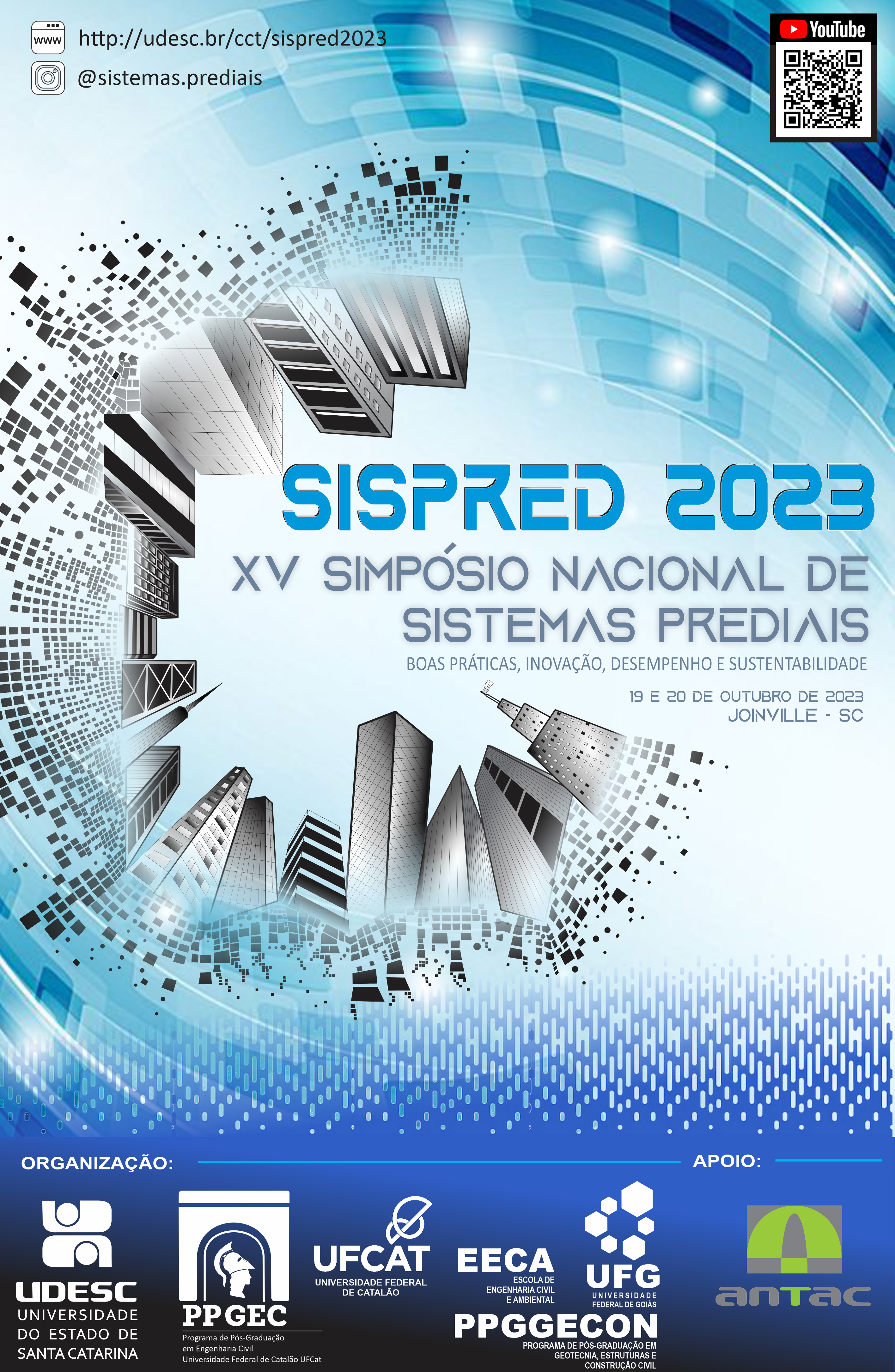Analysis of the dispersion potencial of SARS-CoV-2 through aerosols from toilets
DOI:
https://doi.org/10.46421/sispred.v3.2964Keywords:
SARS-CoV-2, Computational fluid dynamics, ToiletAbstract
ABSTRACT: The COVID-19 pandemic, caused by the SARS-CoV-2 virus, caused transformations and challenges to science and social relations. Although the first studies on the mode of transmission of the disease indicated that it occurs through droplets and respiratory secretions, researchers began to hypothesize that the infection could also occur through the faecal-oral route. Evidence of the presence of SARS-CoV-2 in wastewater collected from environments whose users have been diagnosed with COVID-19 has emerged, especially in public toilets and healthcare facilities. These locations are considered critical for the potential spread of the disease, mainly due to the dynamics of flushing. This is due to the fact that flushing is capable of causing the suspension of aerosol particles and water droplets that may contain this infectious agent. Thus, this paper analyzes the potential of dispersion of SARS-CoV-2, through toilet flushing, employing the concepts of computational fluid dynamics (CFD). A simplified model is adopted to represent the geometry of a conventional toilet basin in which multiphase flow behaviour has been observed for a k-ε turbulence model. Preliminary results indicate the dispersion of aerosols to the edge of the toilet.
Downloads
References
BERLEMONT, Alain; GRANCHER, M. S.; GOUESBET, Gérard. Heat and mass transfer coupling between vaporizing droplets and turbulence using a Lagrangian approach. International journal of heat and mass transfer, v. 38, n. 16, p. 3023-3034, 1995.
BOUROUIBA, L. The fluid dynamics of disease transmission. Annual Review of Fluid Mechanics, v. 53, p. 473-508, 2021.
COURANT, R..; FRIEDRICHS K.; LEWY, H. On the partial differential equations of mathematical physics. IBM Journal Research and Development, v.11, p. 215-234, 1967.
HIRT, Cyril W.; NICHOLS, Billy D. Volume of fluid (VOF) method for the dynamics of free boundaries. Journal of computational physics, v. 39, n. 1, p. 201-225, 1981.
HOLSHUE, Michelle L. et al. First case of 2019 novel coronavirus in the United States. New England Journal of Medicine, 2020.
ISSA, R. I. Solution of the Implicitly Discretised Fluid Flow Equations by Operator-Splitting. J. Comput. Phys., v. 62, p. 40–65, 1986.
KUROKAWA, F.A. Contribuições das investigações de técnicas numéricas para o desenvolvimento de modelagens em CFD para problemas de engenharia civil. 2019. Tese de Livre Docência. Universidade de São Paulo.
LAUNDER, Brian Edward; SPALDING, Dudley Brian. The numerical computation of turbulent flows, Computer Methods in Applied Mechanics and Engineering. 1974. p. 269-289.
LIU, Yuan et al. Aerodynamic analysis of SARS-CoV-2 in two Wuhan hospitals. Nature, v. 582, n. 7813, p. 557-560, 2020.
MCDONOUGH, J.M. Introductory lectures on turbulence: physics, mathematics and modeling. 2007.
WANG, Qun et al. Aerosol transmission of SARS-CoV-2 due to the chimney effect in two high-rise housing drainage stacks. Journal of hazardous materials, v. 421, p. 126799, 2022.
WANG, Xin-Wei et al. Concentration and detection of SARS coronavirus in sewage from Xiao Tang Shan Hospital and the 309th Hospital. Journal of virological methods, v. 128, n. 1-2, p. 156-161, 2005.
WEIDHAAS, Jennifer et al. Correlation of SARS-CoV-2 RNA in wastewater with COVID-19 disease burden in sewersheds. Science of the Total Environment, v. 775, p. 145790, 2021.

